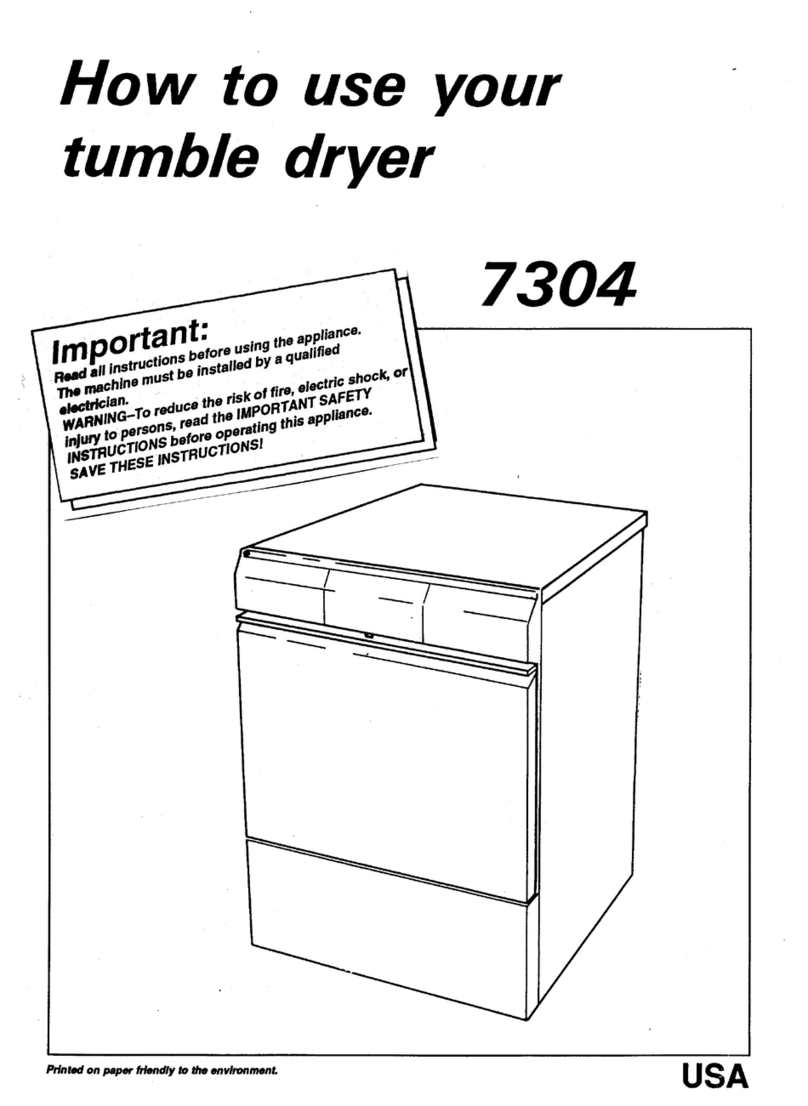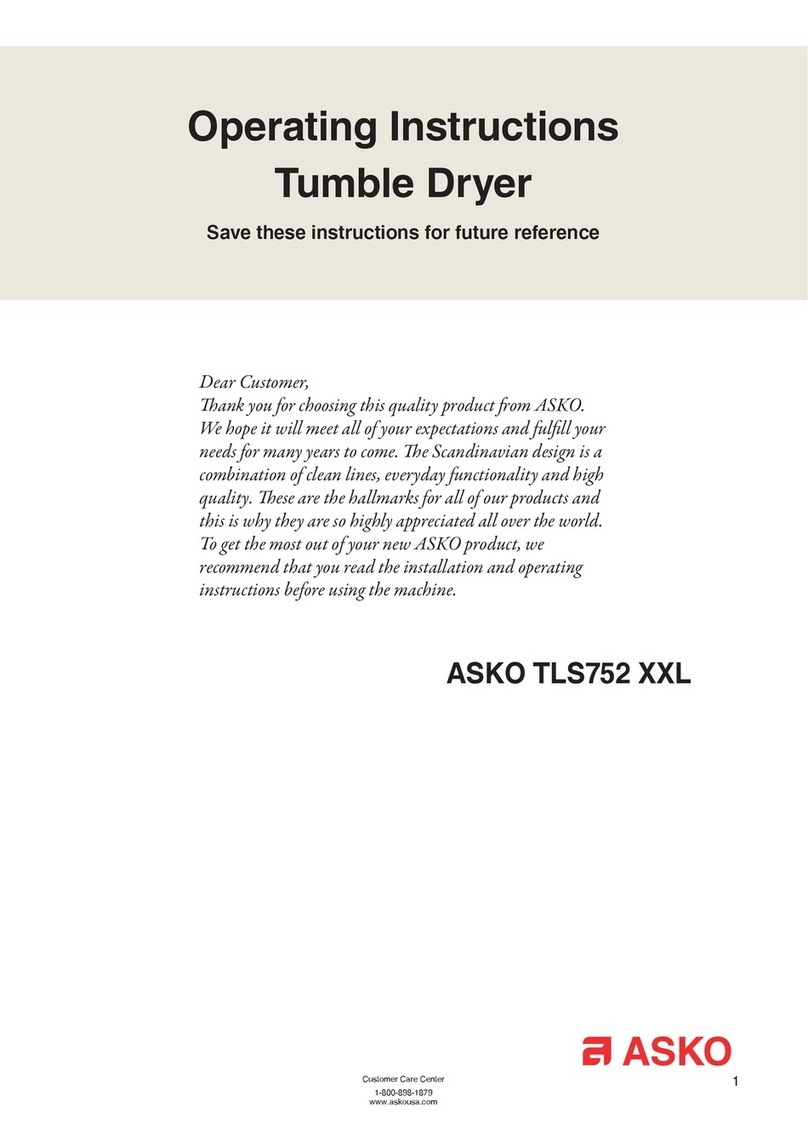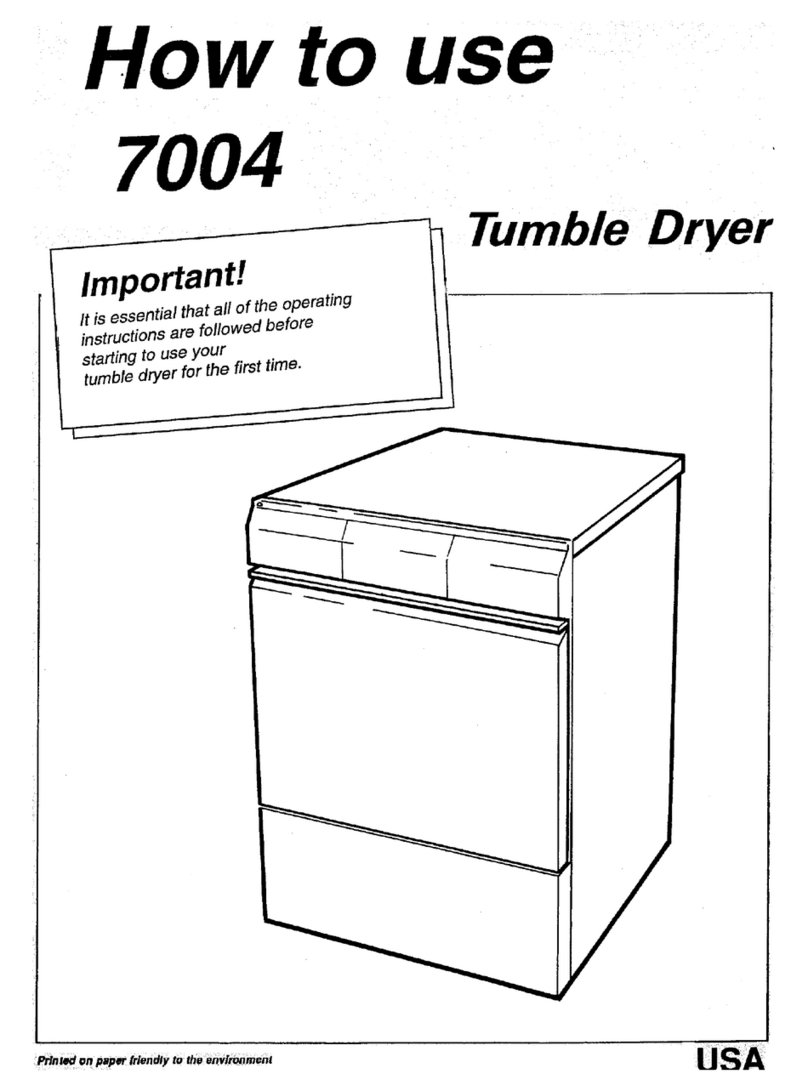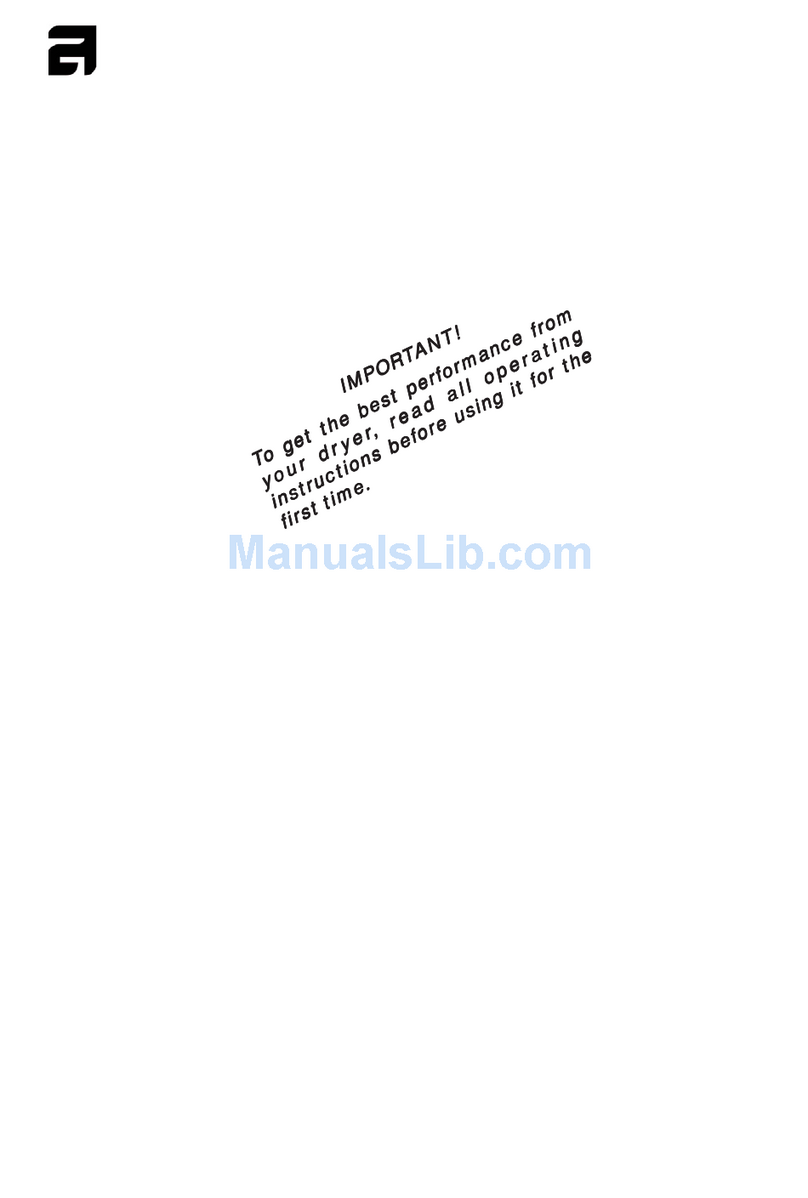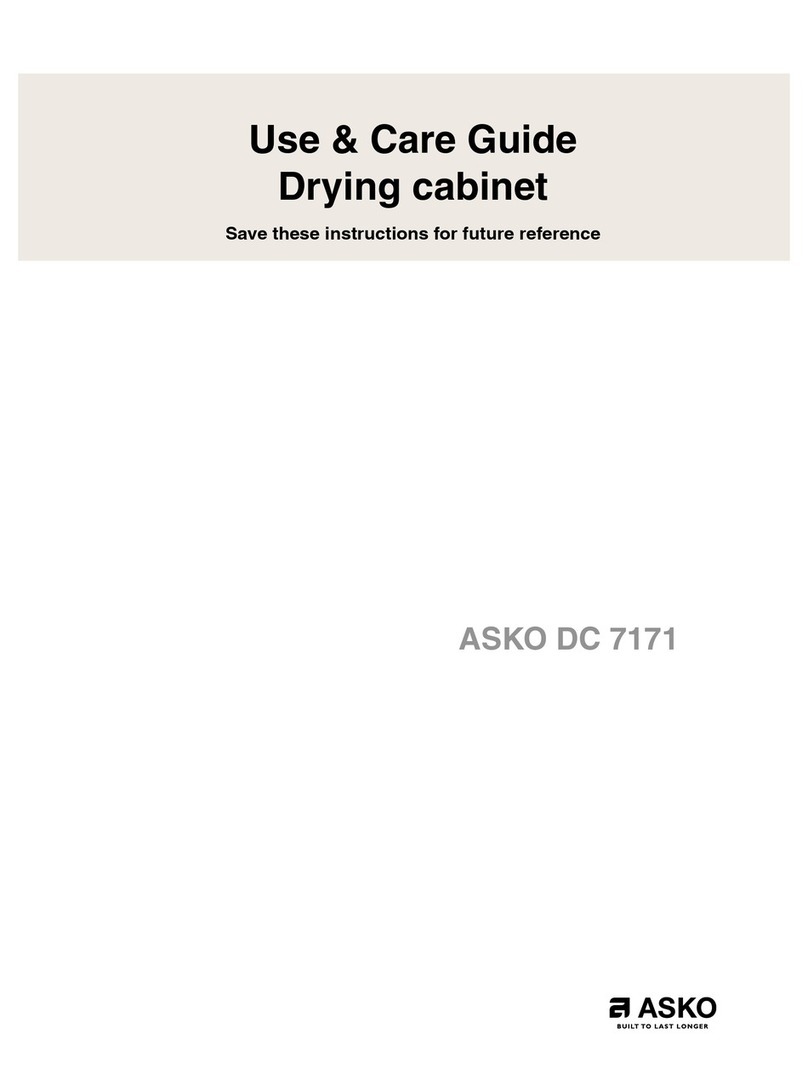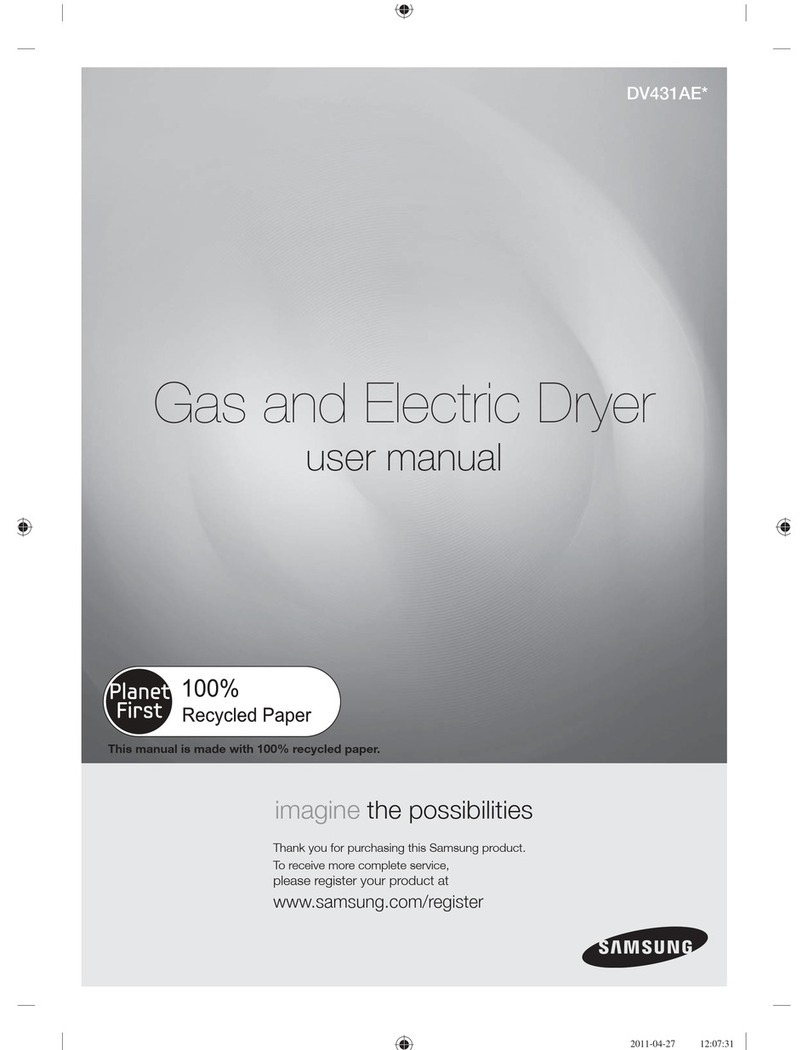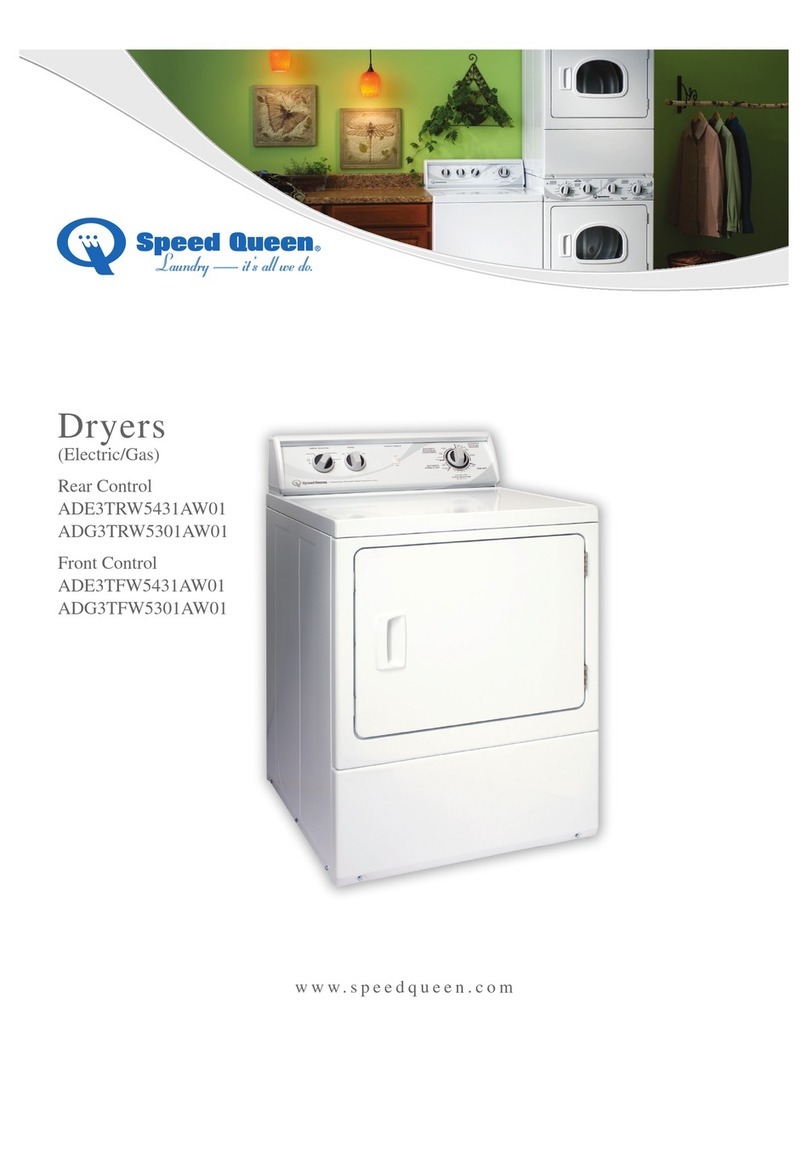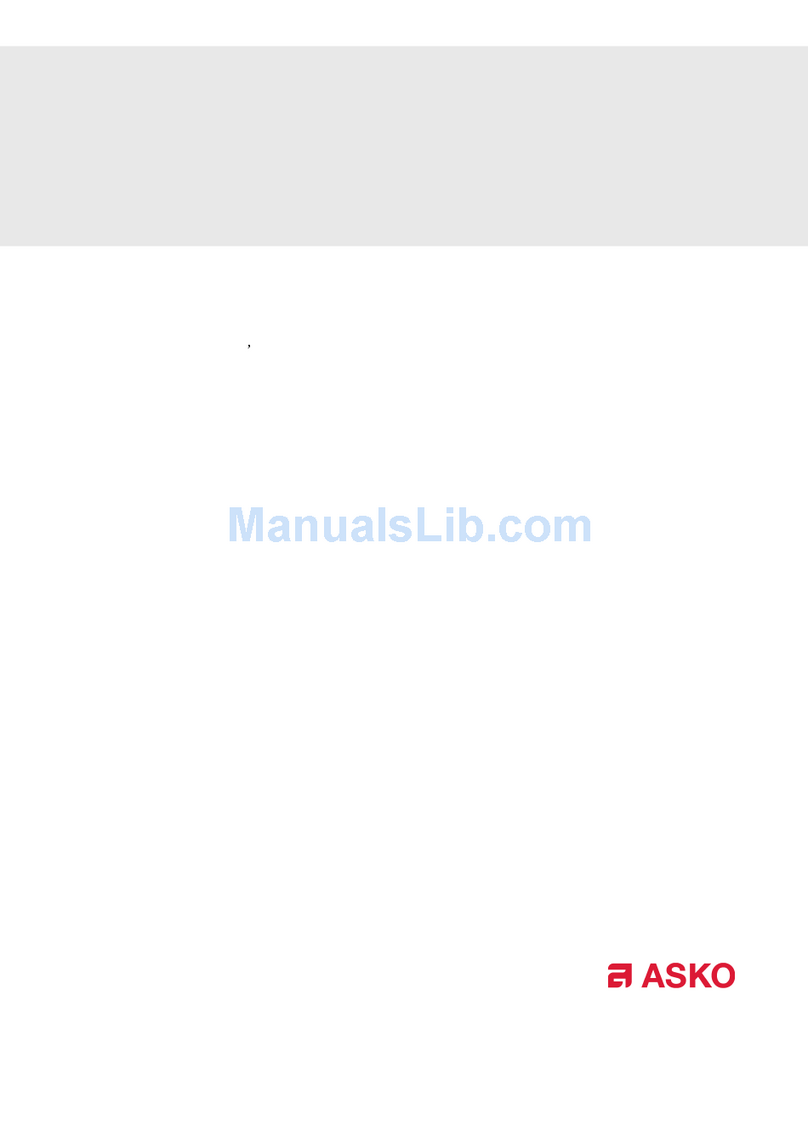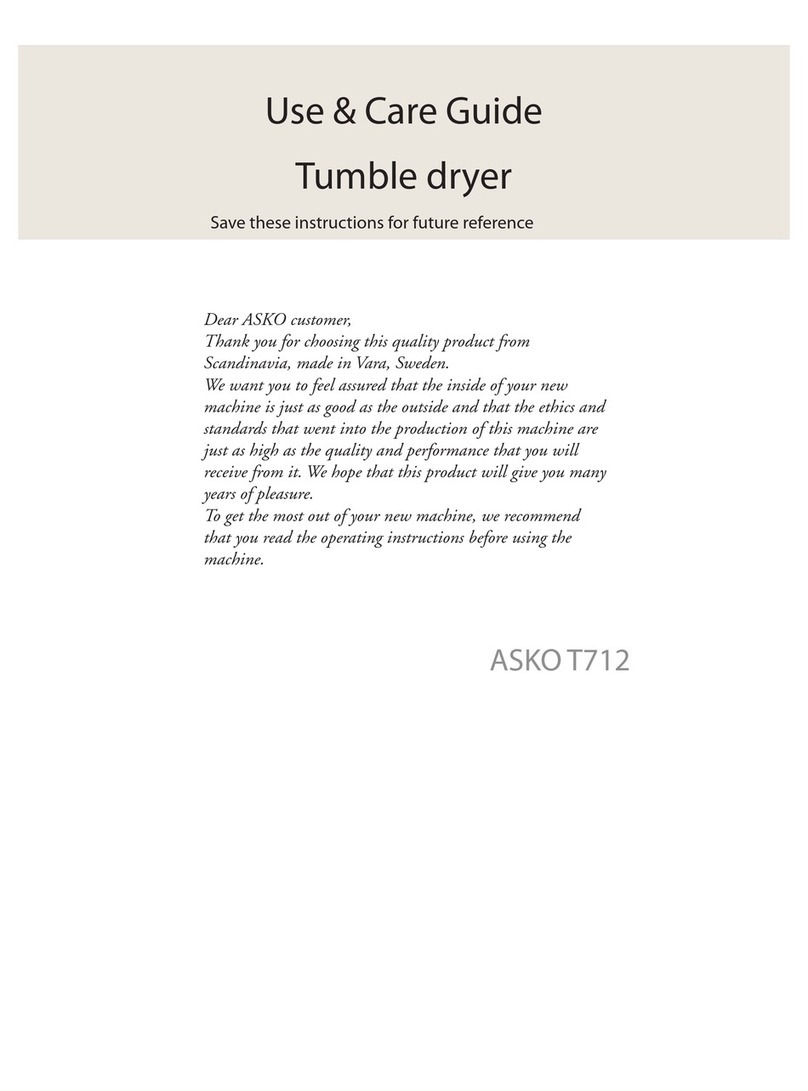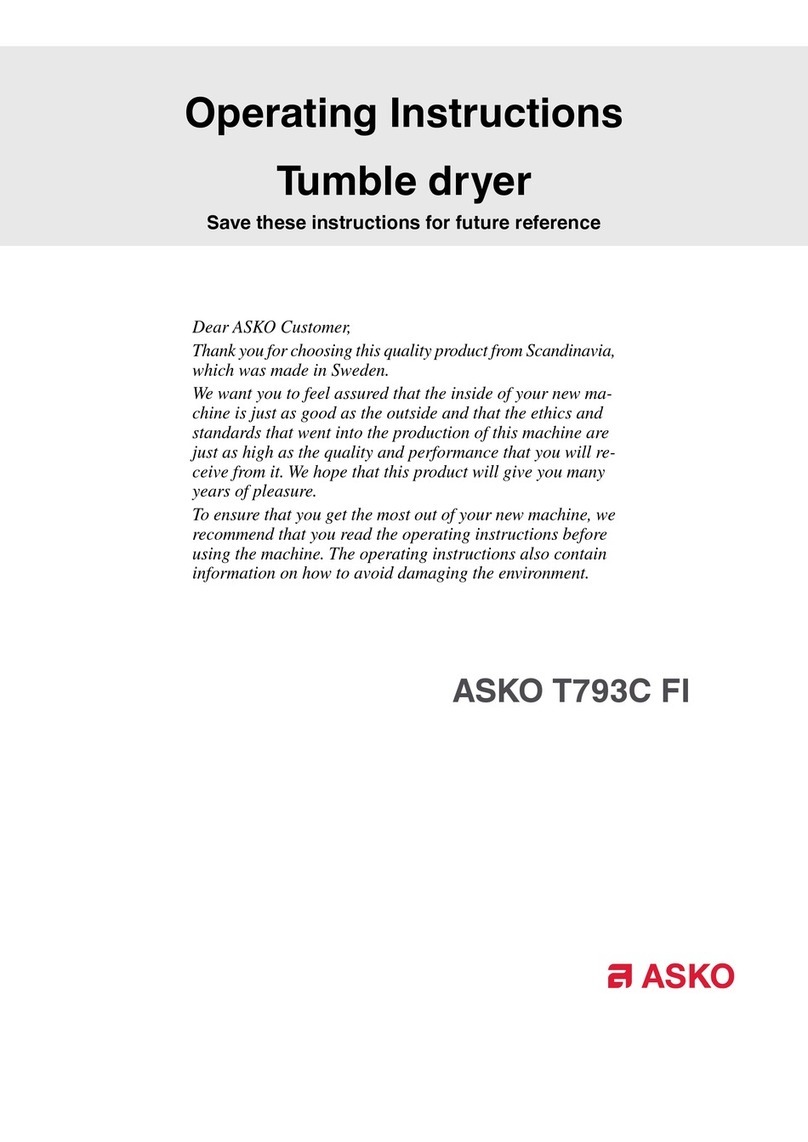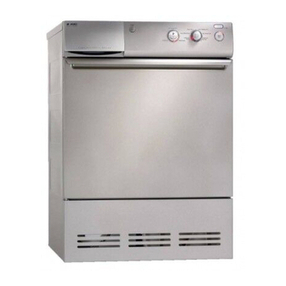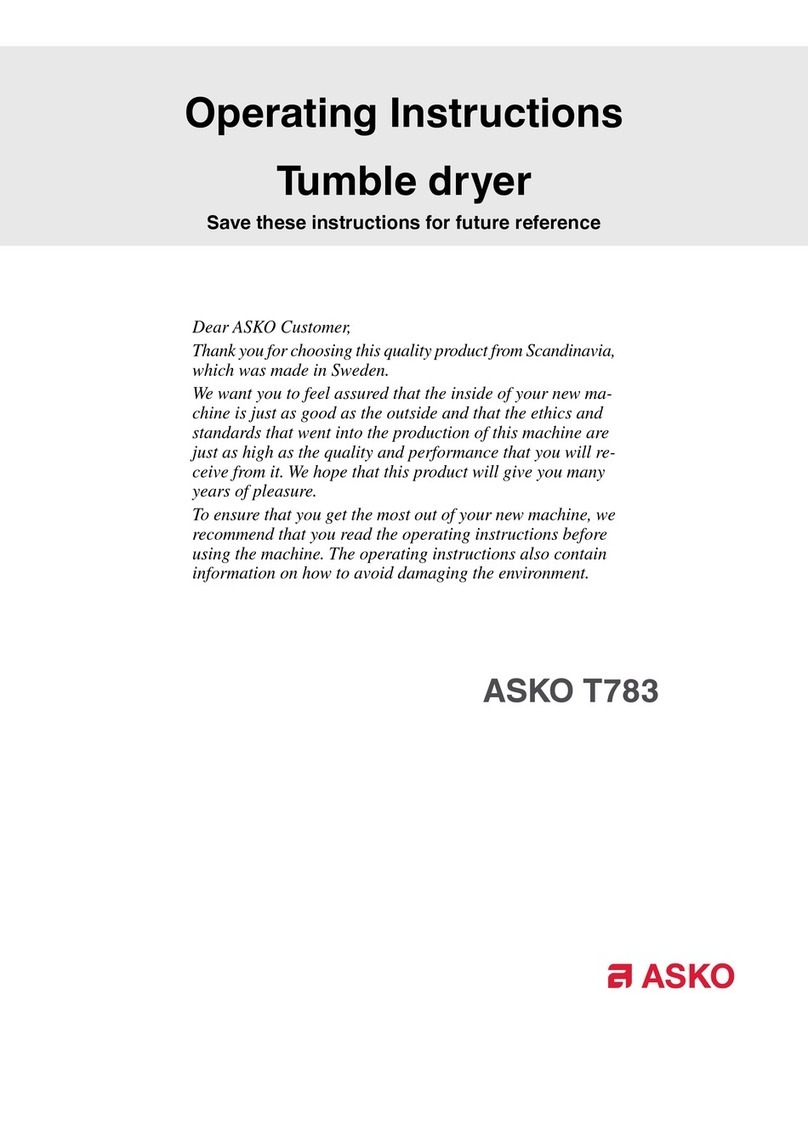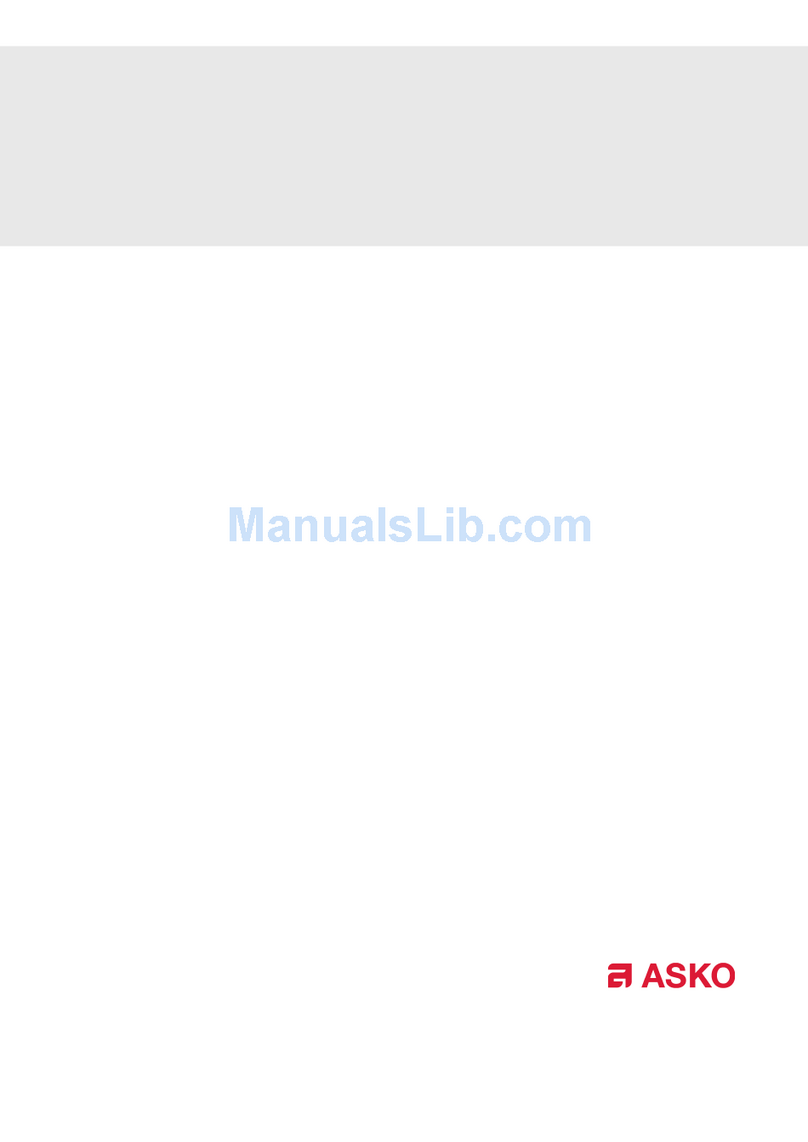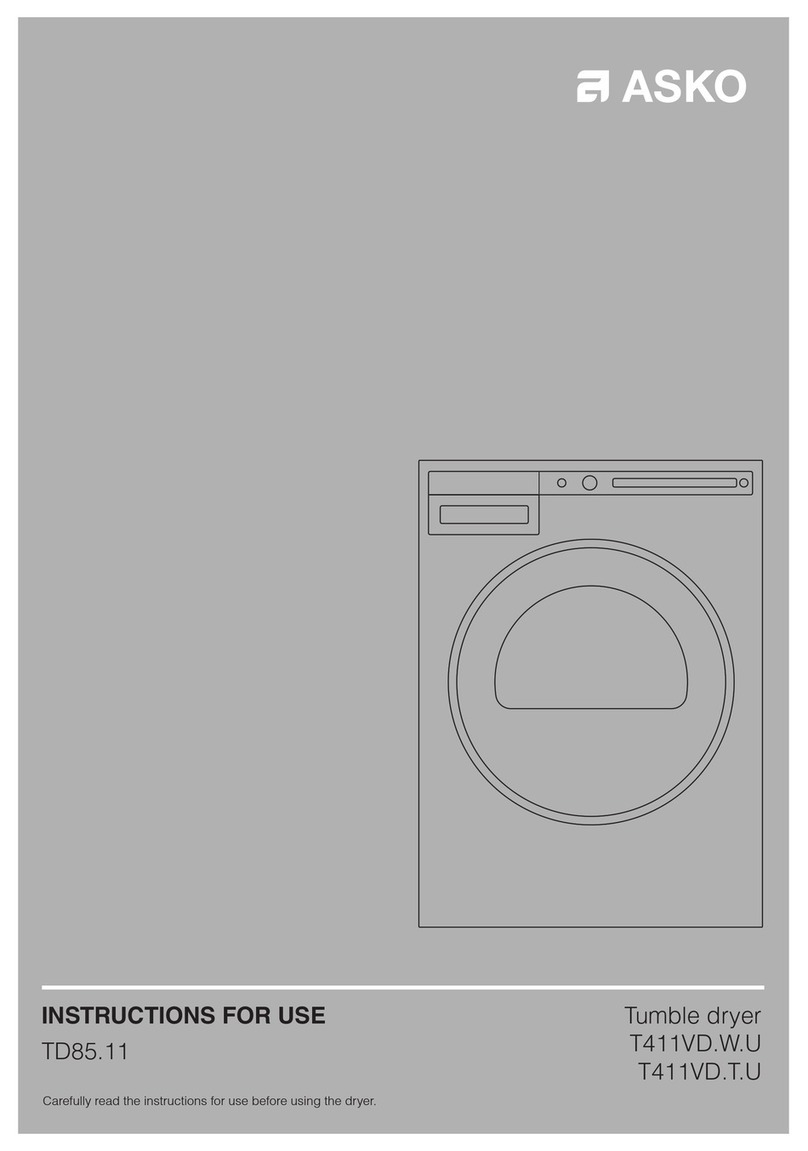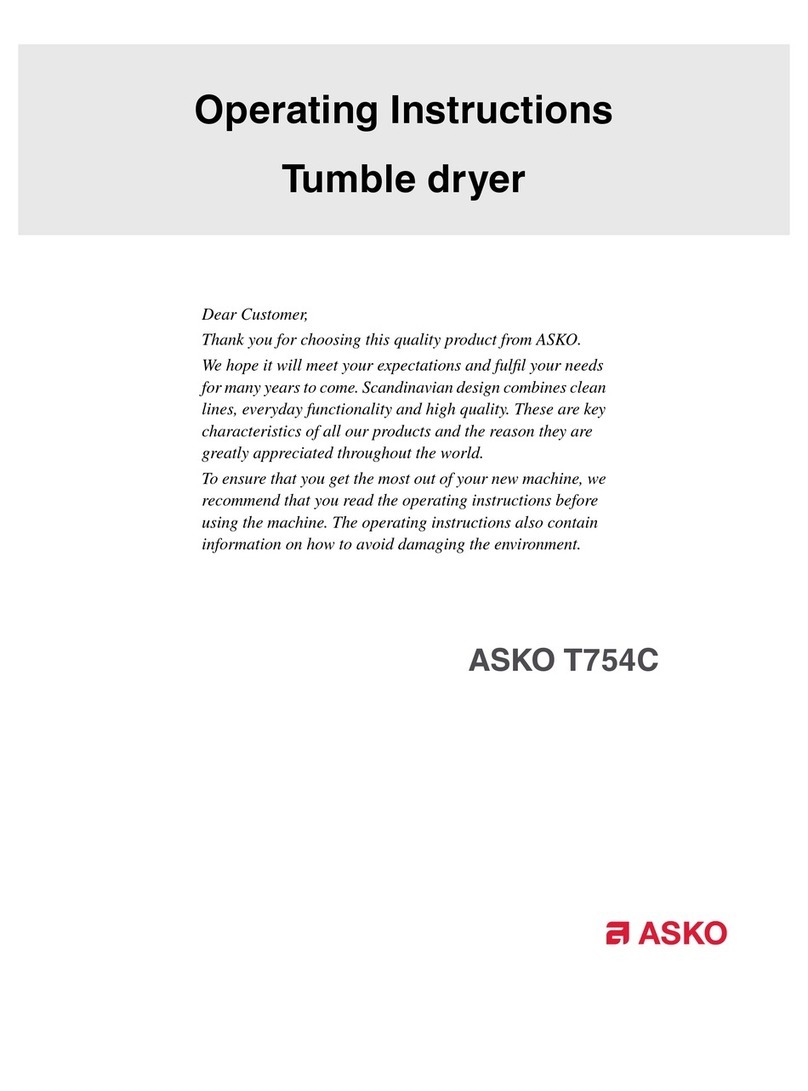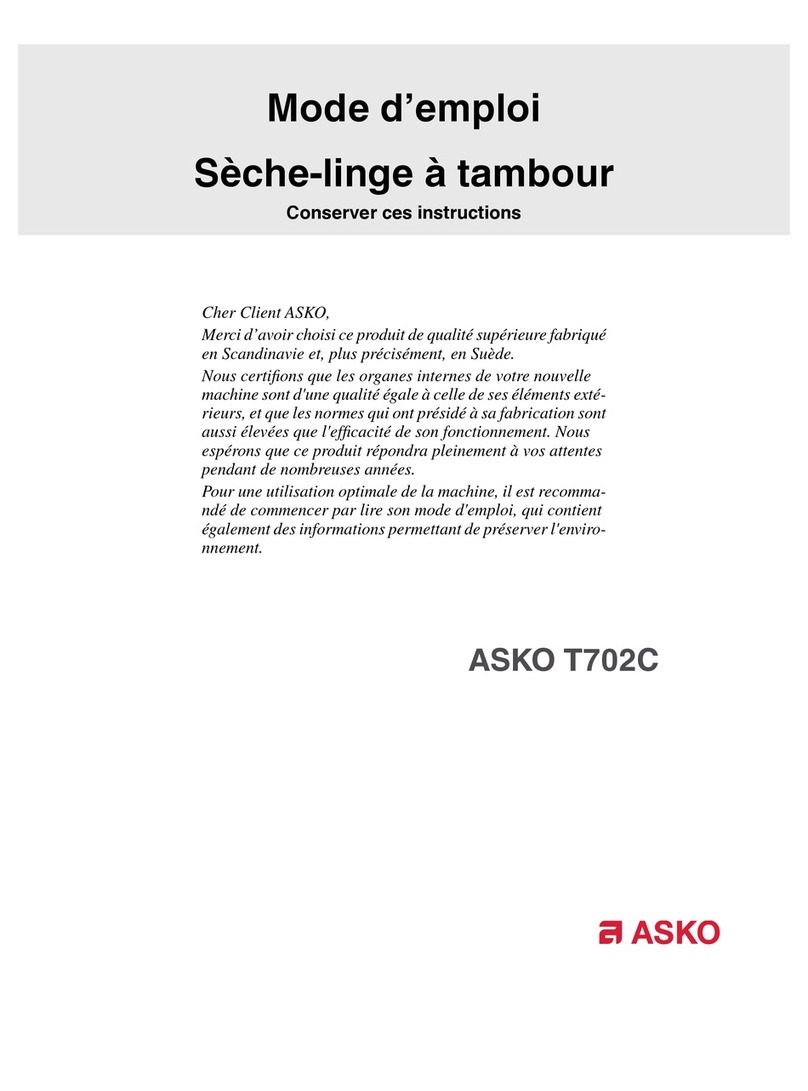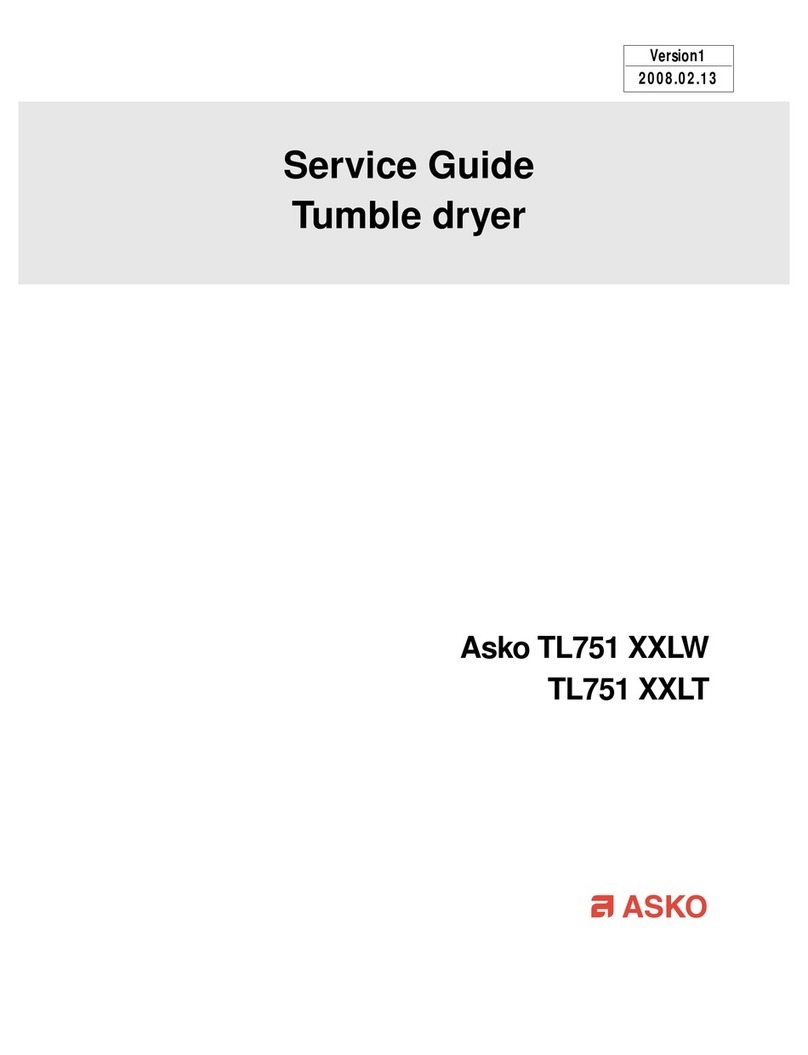3
Customer Care Center, 1-800-898-1879, www.askousa.com
GENERAL
SAVE THESE INSTRUCTIONS FOR FUTURE REFERENCE!
WARNING - To reduce the risk of Þre, electric shock, or injury to persons
when using your appliance, follow basic precautions, including the following:
1. Read all instructions before using the appliance.
2. WARNING! - Only use the dryer to dry laundry that was washed with
water. Do not dry any laundry that was washed or cleaned with ßammable
cleaners or substances (such as gasoline, trichloroethylene etc.) as this
may result in an explosion.
3. Do not wash or dry articles that have been previously cleaned in, washed
in, soaked in, or spotted with gasoline, dry-cleaning solvents, cooking oils,
other ßammable or explosive substances as they give oŰvapors that could
ignite or explode.
4. Instructions for use are available on our website at www.askousa.com.
5. Your dryer is intended solely for household use.
6. Do not allow children to play on or in the appliance. Children should be
closely supervised when near the appliance.
7. Before the appliance is removed from service or discarded, remove the
door to the drying compartment.
8. Do not reach into the appliance if the drum is moving.
9. Do not install or store this appliance where it will be exposed to the weather.
10. Do not tamper with controls.
11. Do not attempt to repair or replace any part of the appliance or perform any
servicing unless speciÞcally recommended in this guide.
12. Do not use fabric softeners or dryer sheets unless the manufacturer gives
written assurance that the product will not damage a tumble dryer.
13. WARNING! - Do not heat dry items containing vinyl, plastic, foam rubber
or similarly textured rubberlike materials, Þberglass, or wool unless the
label speciÞes “washable”.
14. Clean the lint Þlter before or after each load.
15. Keep the area around the exhaust opening and adjacent surrounding areas
free from the accumulation of lint, dust and dirt.
16. The interior of the machine should be cleaned periodically by an authorized
ASKO service agent.
17. Do not place items exposed to cooking oils in your dryer. Items
contaminated with cooking oils may contribute to a chemical reaction
that could cause a load to catch Þre. To reduce the risk of Þre due to
contaminated loads, the Þnal part of a tumble dryer cycle occurs without
IMPORTANT SAFETY INSTRUCTIONS

